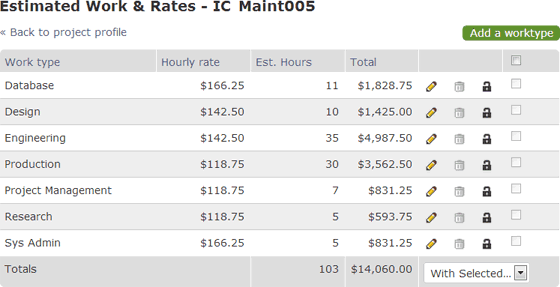Estimating and tracking your time is not easy, at first. It’s difficult to know how much time a project might take, and how much you should charge for it. Fortunately, estimating and tracking your time is an easy discipline to adopt.
Start out with your best guess and track against that. The next project, guess again and track. You will begin to notice some repetition as you break down each estimate into smaller deliverables. Patterns will present themselves, making it easier to more accurately estimate future projects.
One advantage of using online time tracking software is the wealth of data you accumulate. Time tracking data is an invaluable asset for making intelligent, informed project decisions. More importantly, time tracking data will tell you how you are performing compared to your original estimates. Here is how it works using Intervals, our online time tracking application.

First, you break down your estimate into smaller pieces. How much time will be spent in meetings? How much time doing web design? How much time doing web development? Breaking down a project into smaller estimates makes it easier to estimate the project as a whole.
The above screenshot shows a project with a budget of $14,000. So we’ve broken down our estimates by the different types of work we expect to perform. We add hours to each bucket until our estimate matches our client’s budget. Then we start tracking our time on the project.
As you make progress on the project you will begin accumulating more and more time tracking data. Intervals project planning software is able to compare this time tracking data against your original estimate, in real time. Quickly find out if you have gone over the budgeted hours for meetings, web design, web development, or the project as a whole.
![]()
In this example, we can see that our budget is only at half, but we’ve already gone over our hourly estimate for engineering hours. Perhaps the project was front-loaded with engineering, or perhaps the requirements changed. We are still safely within our budget. At this point we can decide if we should pull hours over from other buckets, or if we need to dial back on our engineering hours. The data won’t tell us what to do, but it gives us the information we need to make that decision ourselves.
This is just one example of how comparing estimated to actual time tracking data keeps us better informed and able to make smarter decisions in the earlier stages of a project. With the estimated time and actual time data, we can keep projects under budget and on time, and alert the client and our team to early warnings. Data is good. Data is powerful. Use it to your advantage the next time you need to track your time on a project.



